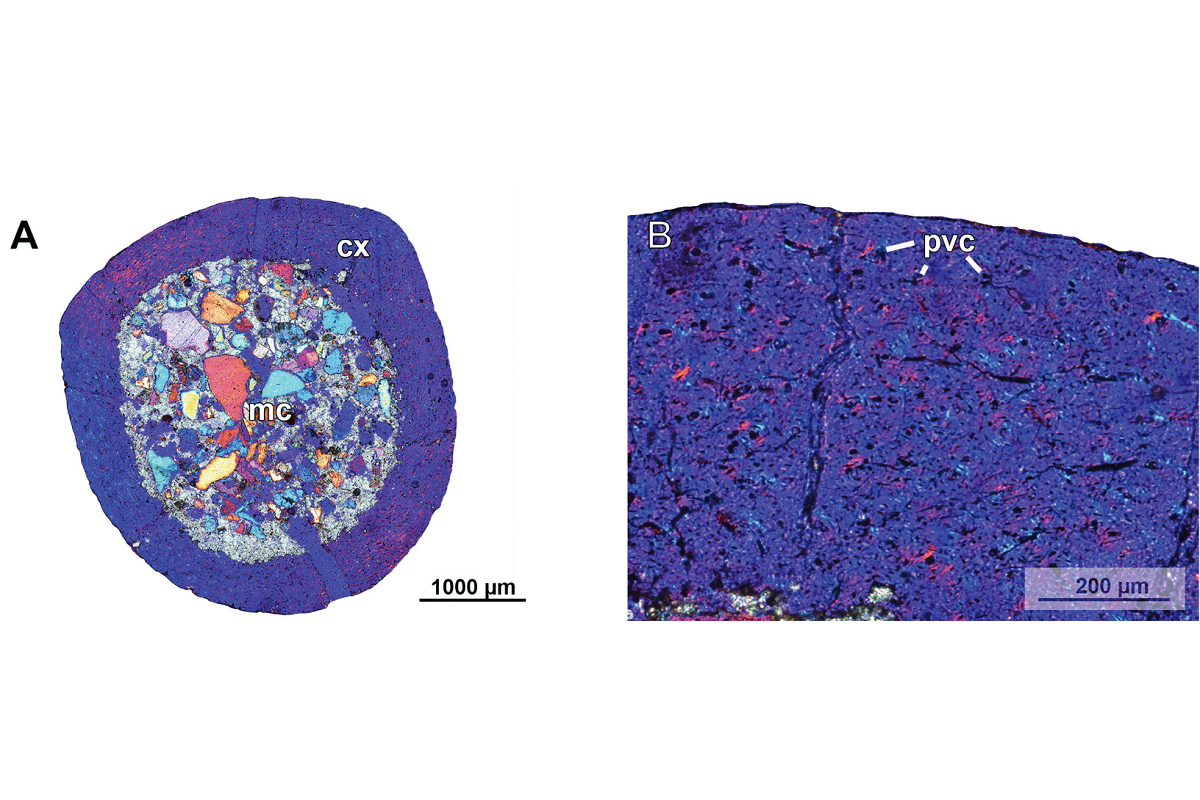St Petersburg University palaeontologists discover that dinosaur remains found more than 20 years ago in Mongolia belonged to a juvenile animal
Scientists from St Petersburg University have conducted a palaeohistological analysis, that is, they have studied the microanatomical structure of the bones of Parvicursor remotus, found in Mongolia in 1996. As a result of the study of the Parvicursor specimen, palaeontologists revealed its juvenile age and made a conclusion about the main ways of evolution of the size of alvarezsaurids.

The Alvarezsauridae family, whose representatives lived at the end of the Cretaceous period (99.6 to 66.0 million years ago), are theropod dinosaurs whose forelimbs were reduced to one finger. There is an ongoing debate in the scientific community about the reasons for the decrease in the forelimbs of these dinosaurs and whether that happened in all members of the family. At some point, there was even an assumption that the forelimbs of these dinosaurs had decreased due to the fact that they made it easier for them to feed on social insects.
The research findings are published in Biological Communications, a journal published by St Petersburg University.
It has been scientifically proven that some species of theropod dinosaurs in the course of their evolution went through miniaturisation, i.e. became smaller, which enabled them to avoid competition among their larger relatives and occupy free ecological niches. Birds are an example of such evolution. They are a group of dinosaurs that emerged due to miniaturisation. Miniaturisation was an element of the evolution of many theropod dinosaurs, including alvarezsaurids.
St Petersburg University scientists are major experts in palaeontology. Thus, at the end of 2022, together with their colleagues from the UK, they discovered and described the oldest complete skeleton of a tailed amphibian "superhero". And in 2023, dinosaur bones helped St Petersburg University palaeontologists confirm that in ancient times Chukotka had a milder climate.
In addition, the University specialists have prepared a unique online course titled "The evolutionary history of vertebrates: from fish to dinosaurs and humans" on the Open Education platform. Students will be able to "travel" along the evolutionary path of vertebrates, from long-extinct groups of dinosaurs to modern representatives of the fauna.
The smallest representative of the alvarezsaurids, Parvicursor remotus, lived at the end of the Cretaceous period on the territory of modern Mongolia. Its remains were first described in 1996 by scientists from the Borissiak Palaeontological Institute of the Russian Academy of Sciences. For a long time, it was believed that the remains of Parvicursor belonged to a very small adult, about 40 cm long. However, St Petersburg University palaeontologists, together with their colleagues from the Palaeontological Institute, conducted a detailed study of the remains of this species and made an opposite conclusion.
‘We took the remains of a Parvicursor holotype specimen, which are kept at the Palaeontological Institute of the Russian Academy of Sciences, and applied palaeohistological methods to study them. We believe that if this dinosaur were an adult one, the bones would have annual rings similar to the rings of trees, but they were not found in the sample studied. In addition, if that dinosaur were an adult, dense bone tissue with a small number of vessels would pass along the outer side of the bones, because bones must have blood supply for their growth, and it is this "nutrition" that vessels carry,’ reported Pavel Skutschas, Head of the Department of Vertebrate Zoology at St Petersburg University.
St Petersburg University, the oldest university in Russia, was founded on 28 January (8 February) 1724. This is the day when Peter the Great issued a decree establishing the University and the Russian Academy of Sciences. Today, St Petersburg University is an internationally recognised centre for education, research and culture. In 2024, St Petersburg University will celebrate its 300th anniversary.
The plan of events during the celebration of the anniversary of the University was approved at the meeting of the Organising Committee for the celebration of St Petersburg University’s 300th anniversary. The meeting was chaired by Dmitry Chernyshenko, Deputy Prime Minister of the Russian Federation. Among the events are: the naming of a minor planet in honour of St Petersburg University; the issuance of bank cards with a special design; the creation of postage stamps dedicated to the history of the oldest university in Russia; and the branding of the aircraft of the Rossiya Airlines to name just a few. The University has launched a website dedicated to the upcoming holiday. The website contains information about outstanding University staff, students, and alumni; scientific achievements; and details of preparations for the anniversary.
The findings enable the scientists to assert that the structure of the bones of Parvicursor corresponds to a juvenile dinosaur, less than 12 months old. Despite its young age, it was confirmed that miniaturisation had been characteristic of alvarezsaurids, yet not all representatives had gone through it. In addition, no morphological adaptations to alvarezsaurids’ social insect diet were found and, accordingly, their reduction in size and reduction of the forelimbs are not connected with this food strategy.

